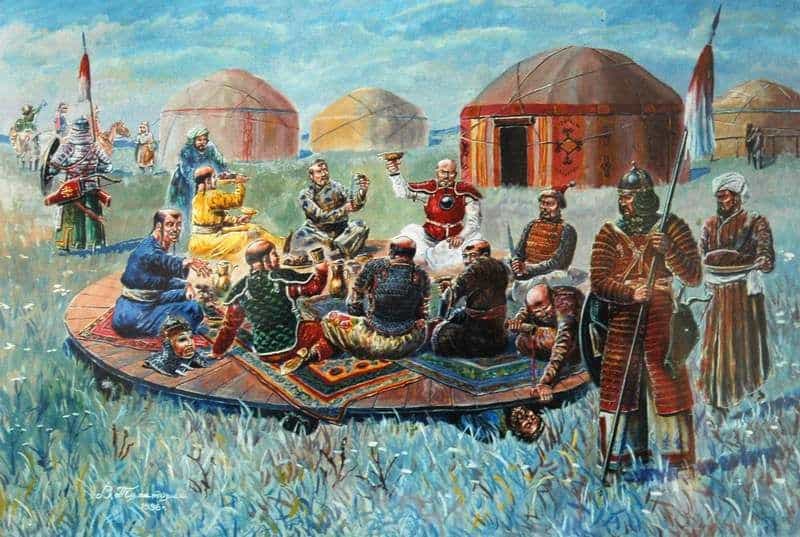Did you know that the Mongols once celebrated a victory by feasting atop the living bodies of their slowly suffocating defeated foes? Or that Canada was once terrorized by a radical Russian Christian nudist sect that resembled a cross between Hippies, Quakers, and Al Qaeda? History is full of those kinds of interesting but little-known details. Following are forty things about such fascinating historic facts.

40. The Mongols Were Cruelly Inventive in Celebrating Victory
In 1223, after crushing the Khwarezmian Empire, Genghis Khan sent a Mongol expedition of about 20,000 men to raid into the Caucuses and southern Russia. Led by generals Subutai and Jebe, the force defeated all in its path, including the Cumans, allies of the Kievan Rus. The Rus came to the Cumans’ aid, and a vast army set out after the raiders.
The Mongols retreated, and their foes pursued. For nine days, Subutai and Jebe led their pursuers on a merry chase across the Steppe, before suddenly turning on their by-then strung-out enemies at the banks of the Kalka River. In the ensuing battle, fought on May 31st, 1223, the Mongols annihilated their erstwhile pursuers. Things went from bad to worse for the captured enemy commanders when the Mongols decided to celebrate their victory by dining over their captives.

